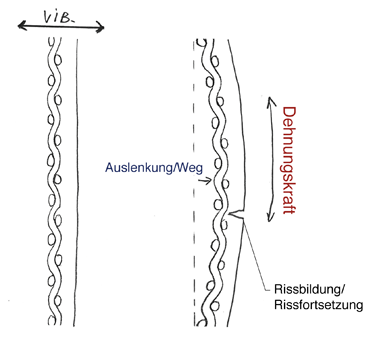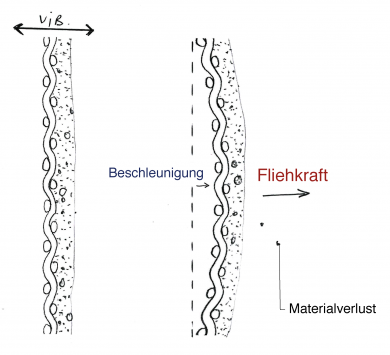CTI research project Risk assessment for shock and vibration emissions with new preventive strategies when transporting fragile paintings
Paintings can be subjected to shaking and vibration when in transit. The handling of paintings in museums, loading and unloading them from boxes, truck journeys over bumpy roads or cargo handling of freight at airports are typical risky situations. The aim of the research project is to document the scale of the shock and vibrations emitted during transit, assess the risk, set tolerance levels and develop new preventive strategies. The new simulation device developed for the project allows the research team to transfer the shock and vibration levels emitted in a real transport situation to test paintings in the laboratory. The series of laboratory tests plus the measurements taken from “real” transport situations provide the basis for assessing current packaging methods, and developing new ones. The primary aim of this exercise is to prevent damage to fragile paintings, i.e. paintings which already have structural weaknesses, for example imperfect adhesion of the paint layer and supporting fabric. These weak points are particularly susceptible to shock and vibration emissions (see diagram).
The interdisciplinary research team comprises experts in conservation and restoration from Berne University of the Arts, Berne University of Applied Sciences (BFH) and the Institute for Mechatronic Systems at BFH TI (Engineering and Technology). Another main pillar of the project is the four business partners: The Swiss insurer Nationale Suisse and the three main Swiss art transporting companies Via Mat Artcare AG, Möbel-Transport AG and Kraft E.L.S. AG. Experts from Swiss museums are also involved in the project as research partners.
(Follow-on project to the Berne University of Applied Sciences research project)
Building on these results, the follow-on project (2013-2014) currently in progress focuses on the optimization of conventional damping materials and new approaches to vibration damping. The Berne University of the Arts research centre acquired a new shaker to test modifications of damping materials and fastening technologies. Individual components and complete prototypes of packaging systems are tested in the laboratory using the shaker, and their efficiency is assessed during field trials. Additionally, a comprehensive monitoring concept for practical use is being developed.

